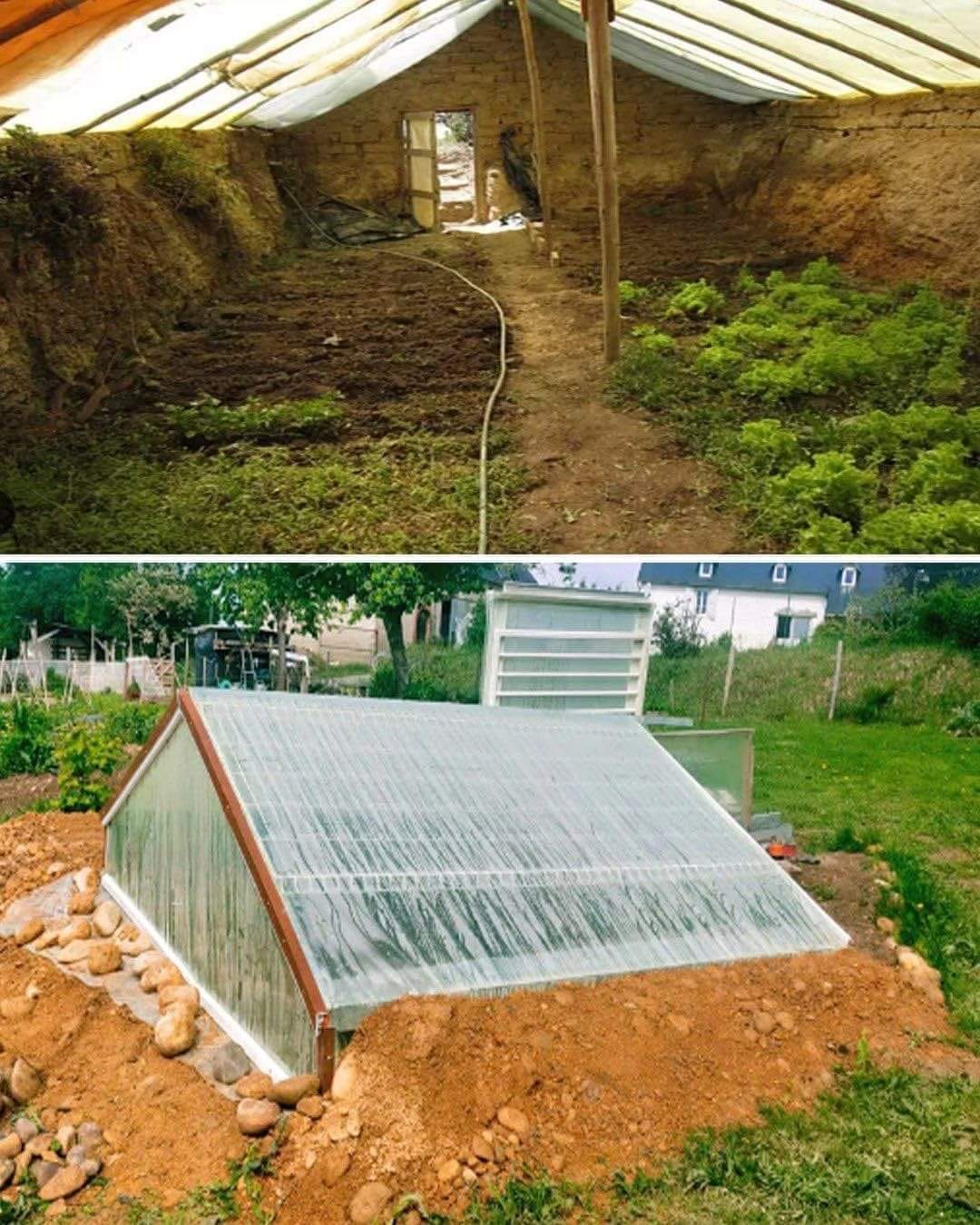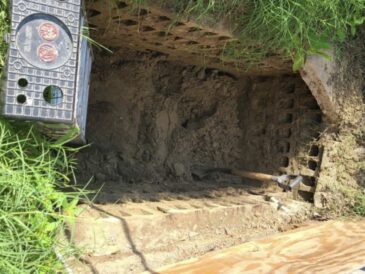Introduction
Innovative farming techniques are evolving rapidly to combat the challenges posed by climate change, land scarcity, and seasonal limitations. One such revolutionary approach gaining traction is the concept of underground greenhouses. By harnessing the natural insulation provided by the earth, these subterranean structures offer a sustainable solution to extending the growing season and ensuring a steady food supply throughout the year. This article delves into the design, advantages, societal implications, and challenges of underground greenhouses, highlighting their potential to transform modern agriculture.
Understanding Underground Greenhouses
The Concept
Traditional above-ground greenhouses have long been utilized to create controlled environments for cultivation. They allow farmers to grow plants in a regulated climate, optimizing conditions for growth. However, they often struggle to maintain consistent temperatures, especially in extreme climates. In contrast, underground greenhouses leverage the thermal mass of the soil to regulate temperatures effectively, providing a stable and conducive environment for plant growth.
Design Variations
The design of underground greenhouses varies depending on several factors, including climate, soil type, and the crops being cultivated. Some structures feature a sunken design with a transparent roof or skylights to allow sunlight to penetrate. This design maximizes the benefits of solar energy while maintaining insulation. Others may employ reflective surfaces to distribute light evenly throughout the space. Moreover, efficient ventilation systems are incorporated to ensure adequate airflow, which prevents humidity buildup that could lead to mold or mildew.
Advantages of Underground Greenhouses
Temperature Regulation
One of the primary advantages of underground greenhouses is their ability to mitigate the effects of external weather conditions. By being partially or entirely buried beneath the surface, these structures are shielded from harsh winds, frost, and excessive heat. This natural insulation minimizes the need for artificial heating or cooling systems, reducing energy consumption. Consequently, the crops grown in these greenhouses are more resilient to fluctuating temperatures, leading to healthier plants and increased yields.
Space Efficiency
Urban areas often face land scarcity, making it challenging to establish traditional farming practices. Underground greenhouses offer significant space-saving benefits by utilizing the space below ground. This innovative use of land allows farmers to maximize their cultivation area without encroaching on valuable surface land. In densely populated cities, the compact footprint of underground greenhouses makes it feasible to establish productive gardens, promoting local food production and reducing the carbon footprint associated with transportation.
Sustainability in Extreme Climates
In regions with extreme climates, such as arid deserts or frigid tundras, underground greenhouses provide a lifeline for agricultural sustainability. By creating a controlled microclimate underground, farmers can cultivate a diverse range of crops that would otherwise struggle to thrive in such harsh environments. This capability not only enhances food security but also contributes to biodiversity conservation by preserving local plant varieties. Thus, underground greenhouses play a crucial role in adapting to and mitigating the impacts of climate change.
Societal Benefits
The year-round availability of fresh produce from underground greenhouses has numerous societal benefits. By reducing reliance on imported goods, these structures strengthen local economies and foster self-sufficiency. Furthermore, access to nutritious, locally grown fruits and vegetables promotes healthier dietary habits and reduces the prevalence of food deserts in underserved communities. This accessibility is vital for enhancing public health and improving quality of life, particularly in areas where fresh produce is scarce.
Challenges and Considerations
Construction and Maintenance
Despite their numerous advantages, underground greenhouses present some challenges. The construction costs can be higher than traditional above-ground structures due to the excavation and reinforcement required. Proper planning and design are essential to ensure structural integrity and functionality. Additionally, maintenance and monitoring are critical to prevent issues such as water seepage, soil compaction, or pest infestations. Regular assessments of the microclimate and soil conditions are necessary to maintain optimal growing conditions and prevent any disruptions in crop production.
Knowledge and Expertise
The successful implementation of underground greenhouses requires specialized knowledge and expertise in design, engineering, and horticulture. Farmers and agricultural practitioners need to be educated about the specific requirements for operating these structures effectively. This includes understanding soil composition, plant needs, and environmental control mechanisms to ensure the long-term success of underground greenhouse projects.
Environmental Considerations
Underground greenhouses provide an intriguing perspective on sustainability beyond mere food production. They can also aid in reducing the carbon footprint associated with traditional farming. By producing food locally and minimizing reliance on transportation, underground greenhouses help lower greenhouse gas emissions. Furthermore, their construction often incorporates renewable energy sources, such as solar panels, to enhance their sustainability.
Crop Selection for Underground Greenhouses
The selection of crops grown in underground greenhouses is crucial for maximizing productivity. High-yielding and climate-resistant varieties tend to perform well in the regulated conditions of these structures. Leafy greens, herbs, root vegetables, and fruits like tomatoes and peppers are popular choices, as they thrive in the consistent temperatures and humidity provided by the underground environment. Additionally, incorporating companion planting techniques can enhance crop health and yield, making underground greenhouses more productive over time.
Future Prospects
As awareness of climate change and sustainable farming practices grows, the interest in underground greenhouses is expected to increase. Innovations in technology, such as automated climate control systems, could enhance the efficiency and effectiveness of these agricultural systems. Furthermore, research into the long-term sustainability of underground farming will likely pave the way for more widespread adoption, making food production more resilient in the face of environmental uncertainties.
Conclusion
Underground greenhouses represent a promising solution to the pressing challenges facing modern agriculture. By harnessing the earth’s natural resources and innovative design principles, these subterranean structures enable year-round food production in a sustainable and efficient manner. As society continues to prioritize environmental stewardship and food security, underground greenhouses are poised to play a pivotal role in shaping the future of farming.
With their ability to mitigate extreme weather conditions, maximize limited space, and contribute to local economies, underground greenhouses offer a sustainable and practical approach to agriculture in an ever-changing world. Embracing this innovative method could revolutionize how we produce food, ensuring a resilient and secure food system for generations to come. As we explore the potential of underground greenhouses, it is crucial to support research, investment, and education in this field, ultimately paving the way for a more sustainable agricultural future.
Community Engagement and Awareness
For underground greenhouses to thrive, community involvement is paramount. Educational programs aimed at local populations can foster an understanding of the benefits of underground farming. Initiatives such as workshops, community garden projects, and partnerships with schools can help raise awareness about sustainable practices and the potential of underground greenhouses. By engaging communities, we can cultivate a culture of stewardship towards local food systems and encourage individuals to take an active role in food production.
Policy Implications
To facilitate the growth of underground greenhouses, it is essential to address policy implications. Governments can support the development of these structures through incentives, grants, and research funding, encouraging more farmers and individuals to adopt this innovative approach. Regulations surrounding construction and land use should also be evaluated to eliminate barriers that may hinder the establishment of underground greenhouses. By creating a supportive policy framework, governments can help promote sustainable agricultural practices and enhance food security.
Conclusion
In summary, underground greenhouses present a viable solution to many of the challenges faced in contemporary agriculture. Their innovative designs and environmental advantages create opportunities for sustainable food production, not just in isolated rural areas, but also within urban settings. By utilizing underground space, optimizing growing conditions, and engaging communities, this approach not only addresses food security and environmental concerns but also promotes healthier lifestyles and stronger local economies. As we look towards the future of agriculture, underground greenhouses exemplify the potential for transformative change in how we approach food production and sustainability. With committed efforts in education, policy-making, and community engagement, underground greenhouses could become a significant aspect of a thriving, sustainable agricultural landscape.





